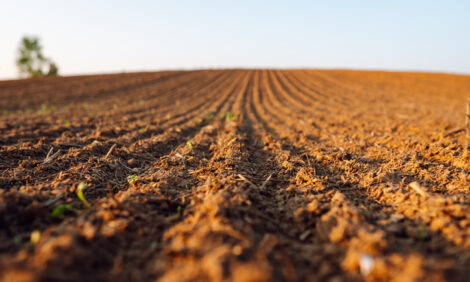



Changes in Composition of Colostrum of Egyptian Buffaloes and Holstein Cows
Researchers in Egypt report what they describe as dramatic changes in the composition of buffalo colostrum over the first five days after calving, as with cow’s colostrum, and the composition of both colostrums approached that of normal milk by the end of that period.Several studies have evaluated the changes in the chemical composition of cow colostrum after parturition but there is no available information about buffalo colostrum, which represents approximately 49 per cent of lactating ruminants in Egypt, according to Alaa M. Abd El-Fattah and colleagues from Cairo University in Egypt.
In a paper published recently in BMC Veterinary Research, they explain that the changes in colostrum composition of Egyptian buffaloes and Holstein cows collected at calving, 6, 12, 24, 48, 72, 96, 120 hours and after 14 days of parturition were studied. Total solids, total protein, whey proteins, fat, lactose and ash contents were determined. Macro– and micro–elements, IgG, IgM, IGF–1, lactoferrin and vitamins (A and E) were also analysed.
At calving, the total protein and whey proteins concentration did not differ between buffalo and cow colostrum, while total solids, fat, lactose and ash concentrations were higher in buffalo than in cow colostrum.
All components decreased gradually as the transition period advanced, except lactose, which increased.
On the fifth day after calving, the concentrations of total protein, whey proteins, fat, ash and total solids decreased by 69.39, 91.53, 36.91, 45.58 and 43.85 per cent for buffalo and by 75.99, 94.12, 53.36, 33.59 and 52.26 per cent for cow colostrum. Lactose concentration increased by 42.45 per cent for buffalo and 57.39 per cent for cow colostrum.
The macro-and micro-elements concentration of both colostrums tended to decline slightly toward normality on the fifth day of parturition. Buffalo colostrum had a higher concentration of vitamin E than cow colostrum during the experimental period. At calving, the concentration of vitamin A in buffalo colostrum was found to be approximately 1.50 times lower than in cow colostrum.
The concentrations of IgG, IgM, IGF-1 and lactoferrin decreased by 97.90, 97.50, 96.25 and 96.70 per cent for buffalo and 76.96, 74.92, 76.00 and 77.44 per cent for cow colostrum, respectively after five days of parturition.
The researchers concluded that there is a dramatic change in the composition of buffalo and cow colostrum between the first milking and the fifth day after calving. They also observed differences between buffalo and cow colostrum composition over that period and they found that the composition of both colostrums approaches to those of normal milk within five days after parturition.
Reference
El-Fattah A.M.A., F.H.R.A. Rabo, S.M. El-Dieb and H.A. El-Kashef. 2012. Changes in composition of colostrum of Egyptian buffaloes and Holstein cows. BMC Veterinary Research 8:19. doi:10.1186/1746-6148-8-19
Further Reading
| - | You can view the full report (as a provisional PDF) by clicking here. |
March 2012


